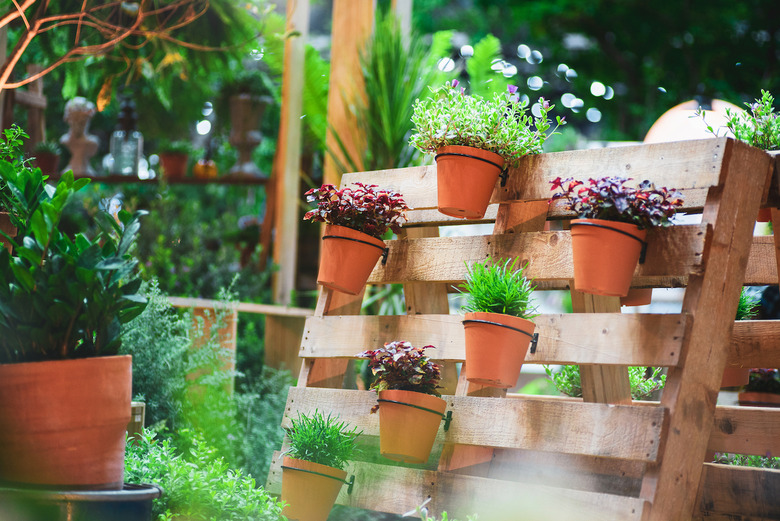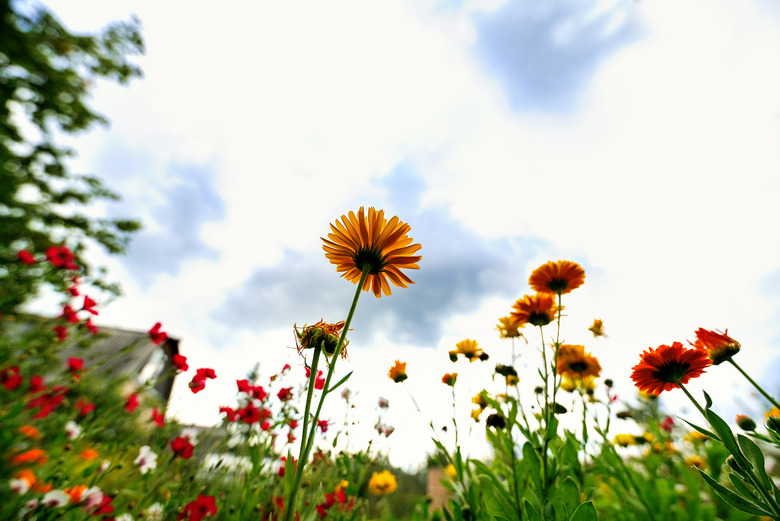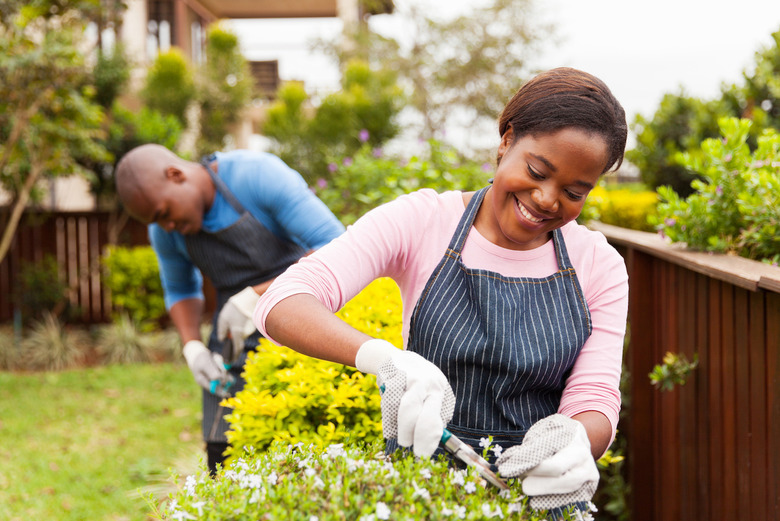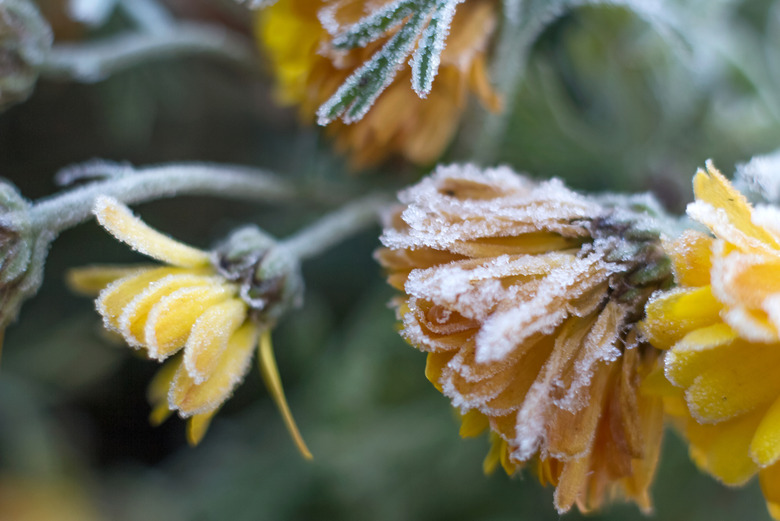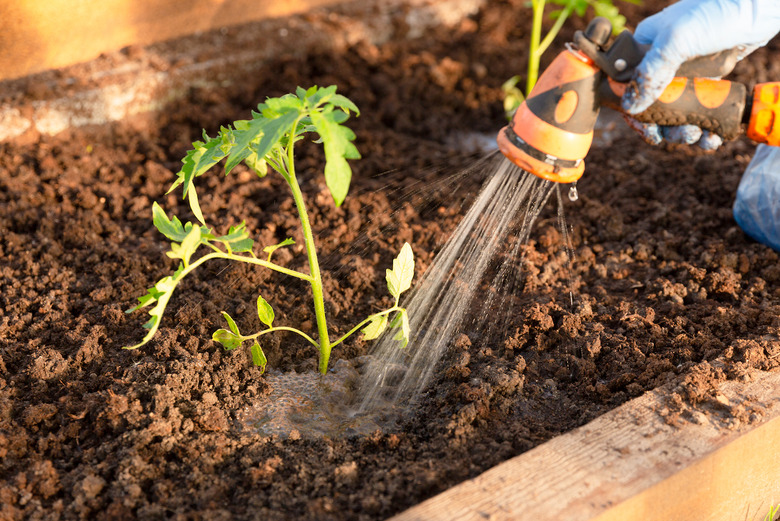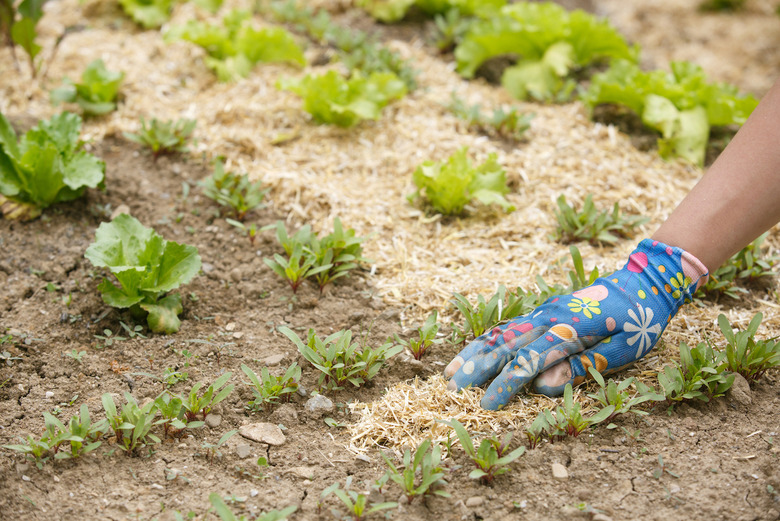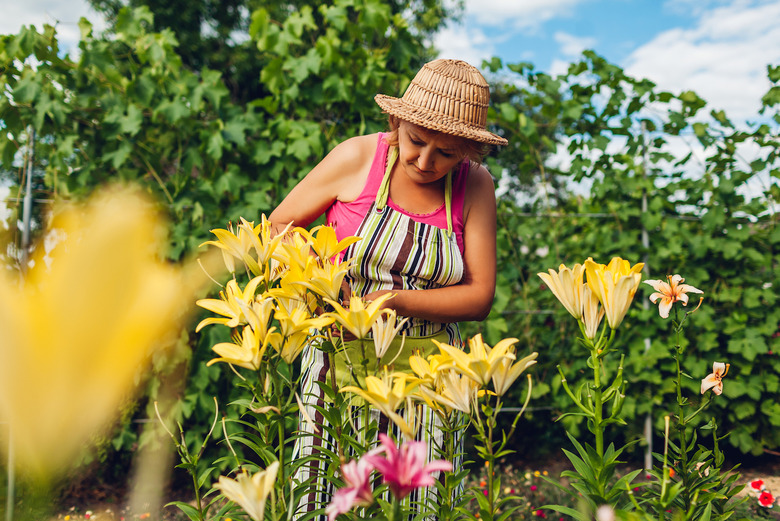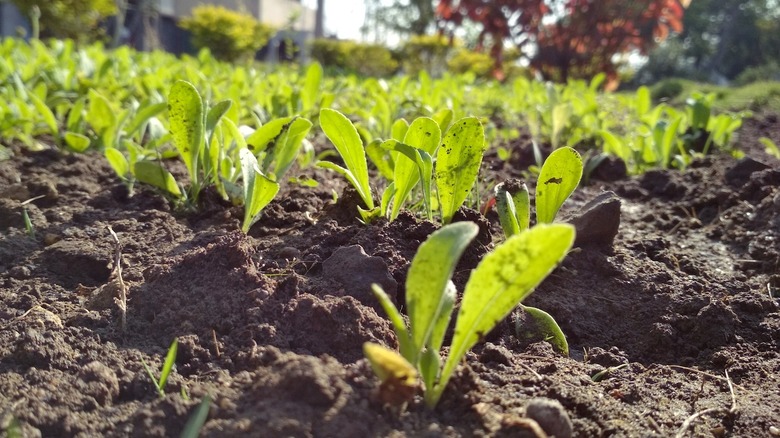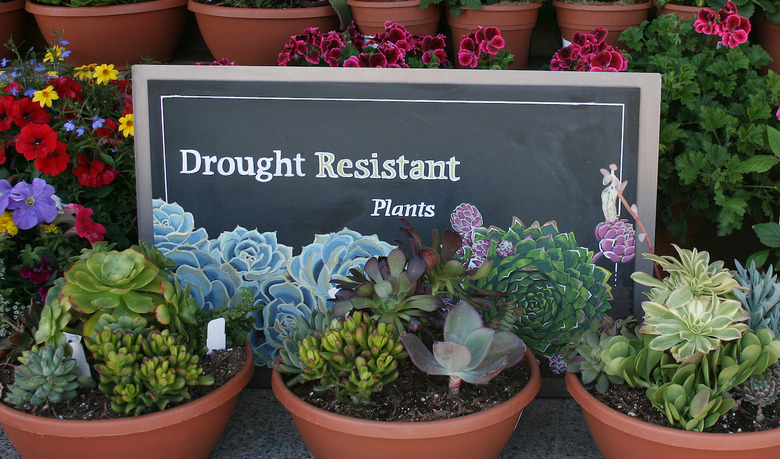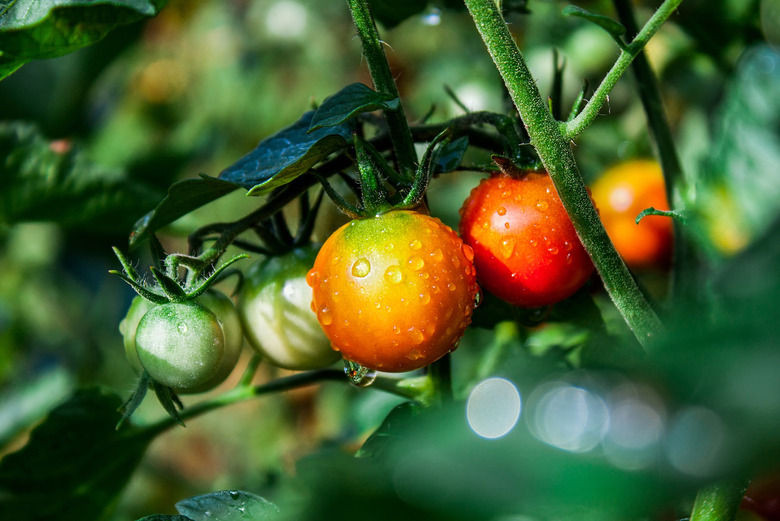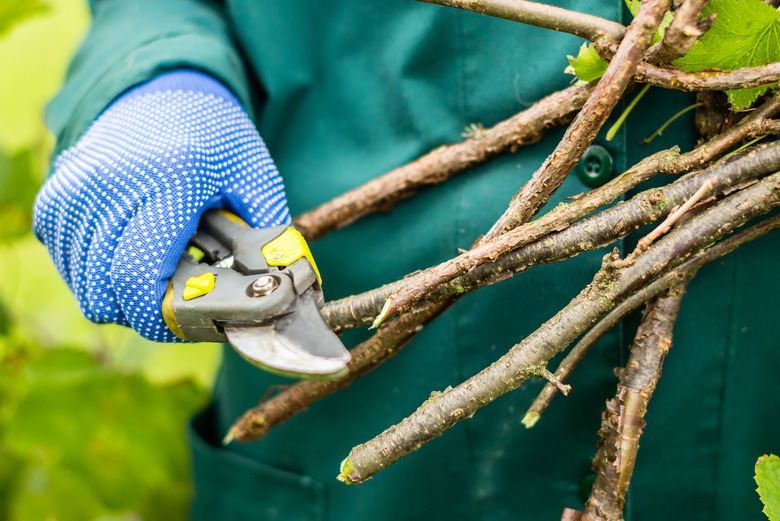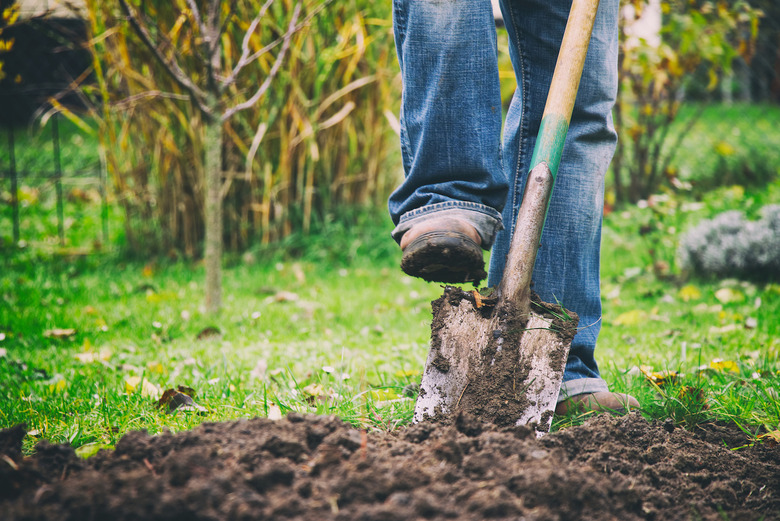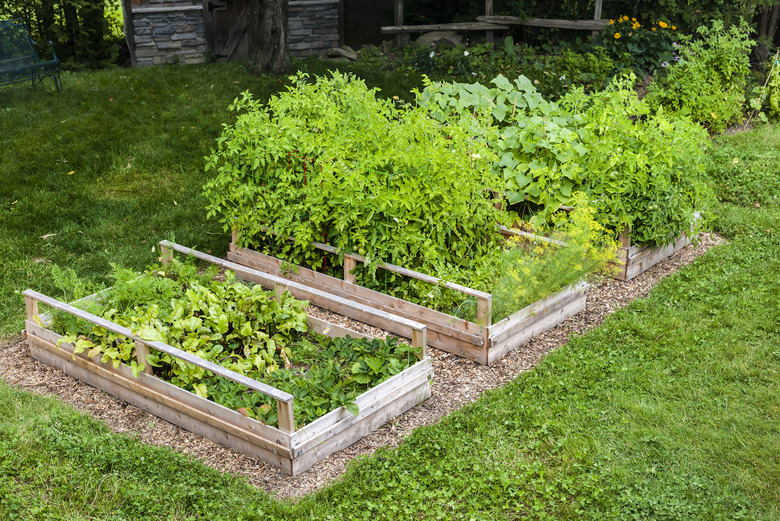What To Know About The Weather And Your Garden
Gardens can be a reminder of the beauty in the world when things around you are stressful. In return for the gentle care you give them, you are rewarded with produce to eat and flowers to smell. Still, spring and summer occasionally have unexpected turns up their sleeves like a strong storm or heavy winds. Here's how to handle the different ways weather affects your garden so you can give your plants their best shot at thriving.
It’s not just weather
First, a clarification: The weather is not the sole meteorological force wreaking havoc or prospering your plants. Climate is a major factor too. And despite what a common weather myth might lead you to believe, weather and climate are two different concepts. Weather refers to the day-to-day state of the atmosphere and how it changes across hours and minutes. Weather means precipitation, clouds, temperatures, wind and humidity. Climate refers to the average weather in a place over a longer time period. So while the immediate weather may determine whether your plants thrive or die, long-term climate patterns explain why certain plant types favor locations over others.
Know whether your plant is annual, perennial or biennial
Plants are classified as one of three types: annual, perennial and biennial. Annual plants complete their entire life cycle — seed to death — in a single growing season. The only parts of an annual plant that may pass on to the next generation are its dormant seed. Perennial plants persist. During winters, the tops of perennial plants die and regrow in spring. The best plants for beginners consist of both annuals and perennials. Less common biennials require two seasons of growth to complete a life cycle. Your plant's category will determine how it reacts to changes in weather.
Check out the plant hardiness map
In order to determine whether a plant will survive winter in your given climate, it's best to look at the plant hardiness map. Based on the average annual extreme minimum temperatures during a previous 30-year period, the plant hardiness map divides up the country into 26 zones. The map does not replace or usurp your knowledge of your garden. Rather, it offers helpful predictions for what will grow best in your corner of the Earth. Use the United States Department of Agriculture's interactive map to predict your area's winter temps and determine what will bloom best in your zone. But remember, this is just a guide, and your garden will have its own specific conditions.
Know the first and last frost dates
Knowing your hardiness zone is not enough to protect a garden from winter weather. A general rule of (green) thumb is to plant after the last frost and harvest before the first. Frosts happen when air temperatures dip down between 36 degrees Fahrenheit and 32 degrees Fahrenheit. Once below 32 degrees, a frost becomes a freeze. Find your area's first and last frost dates using the Old Farmer's Almanac guide based on National Oceanic and Atmospheric Administration data. However, it's best to wait to garden for an additional two weeks after the last and before the first frost since a chance of frost still remains.
Keep a weather diary
Start a weekly or daily weather diary to track your plants' progress. Record weather patterns and how your plants fare in them. Spring weather, in particular, can take a turn for the extreme. Monitoring your plant's growth and recovery from weather-induced damage can deepen your understanding and better prepare you for the next growing season.
Build an at-home weather station
Along with the weather journal, build a weather station too. Monitor temperature, wind speed, barometric pressure and humidity using purchasable tools and monitors. Get the kids involved in the gardening process too. Together, build a homemade wind vane or conduct other simple at-home weather projects to get a better read on your backyard's own microclimate.
Know your heat zone
Like the plant hardiness map, the heat zone map can grow your understanding of what your garden can and cannot sustain. Created by the American Horticulture Society, the heat zone map divides the U.S. into 12 zones determined by the number of relative "heat days" in that given spot a year. For a day to be a "heat day," temperatures must rise above 86 degrees. While zone 1 may experience zero to one heat days a year, zone 12 may have upwards of 210. Intense heat can stress a plant until its leaves turn pale and flowers quit blooming. Ultimate demise may come slower in heat than frost, but both result in dead plants. Read labels and look for plants that suit your climate.
Heat-proof your garden
Even when following plant hardiness and heat zone recommendations, it's important to heat-proof your garden. One common gardening tip: Water vegetable gardens early in the day when temperatures are cool. By doing this, you ensure the soil soaks up the water. Watering soil that's been dried out by the sun will only result in runoff. Mulch can also be your best friend. Go for straw or unprinted cardboard mulch to retain moisture and slightly lower soil temperatures.
Protect yourself from heat too
Your plants are not the only ones at risk of too much sun exposure or heat. For better skin health, apply a water-resistant, broad-spectrum sunscreen of SPF 30 or higher before heading out to the yard. Don't forget SPF lip balm too. Cover up all exposed skin and reapply every two hours. Also avoid gardening during the sun's peak hours, 10 a.m. to 2 p.m., and stay in the shade as much as possible. Not only will this reduce the risk of skin cancer but also of heatstroke and rash.
Pay attention to wind
Wind increases moisture evaporation from the soil and moisture loss at the leaf level. These effects only worsen on hot days, when plants turn dehydrated and, in extreme weather cases, burn. To reduce air circulation in your garden, consider building fences or planting hefty hedges and trees to protect plants from wind damage.
Don’t neglect ‘drought-resistant’ plants
Plant tissue must retain enough water to stay alive, and even plants advertised as "drought-resistant" cannot put up a fight against devastating natural disasters, namely intense droughts and heatwaves. Still, some plants are in less need of water and more tolerant of droughts than others. Opting for these in your garden can help conserve water and increase sustainability.
Don’t overwater your plants
Excess water can cut off the oxygen supply to a plant's roots. Regardless of whether the water rained from the sky or your watering can, overwatered plants will show concerning symptoms like yellowed, scorched or burnt leaves. Clogged roots are defenseless against rot-causing organisms, so some will begin to rot at the top. Plants may also sprout blisters or bumps on the leaves or stem. Known as oedema, this condition is not infectious or serious and spots will eventually dry and burst on their own. Mulch can help absorb moisture. Otherwise, to prepare for a heavy storm, gardeners may elect to cover plants with burlap or overturned pots and bowls.
Prune after storms
Strong storm activity will undoubtedly result in tree, shrub and plant breakage. After a storm, allow damaged but not broken plant limbs to dry and die before pruning affected areas. Other rainstorm garden duties include supporting tall plants prior to heavy rain with burlap and twine and harvesting any vegetables (or maybe fruits) and herbs that are more susceptible to rain.
Make a rain garden
Want to put stormwater to good use? Be resourceful and plant a garden where most of your rainwater runs off. In residential areas, this spot will most likely be near a downspout or next to your driveway or sidewalk where most water gathers. Remember to keep the garden at least 10 feet away from your home or a neighbor's to avoid adverse moisture problems. You can allow the rainwater to naturally collect in the garden or direct the flow using a buried connection pipe. Though likely not up to par with the nation's most beautiful botanical gardens, your rain garden will nevertheless be a lovely addition to your home and can even improve water quality.
Create a microclimate
Another final way to contend with the weather is to make your own. Microclimates are small areas with a climate different from the surrounding area. These microclimates can be as small as a raised garden bed. A common way to craft a microclimate at home is to plant near the pavement. Heat radiates off the paving at night after it's been absorbed during the day. Fences and other structures also do the trick to trap heat. Should all the work tending to your garden prove overwhelming, consider one of 39 other fun hobbies to pick up whether you're 15 years old or over 40.
More From The Active Times:
'Red Sky at Night, Sailor's Delight' And Other Weather Proverbs Explained
Peak Cherry Blossom Season in America Told Through Photos
30 Ways to Make the Most of Spring Weather

